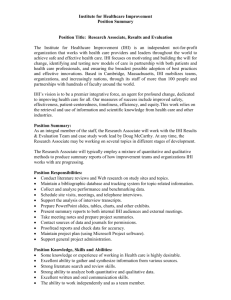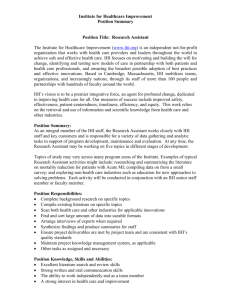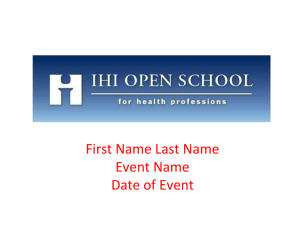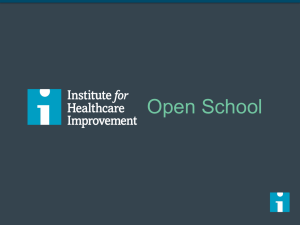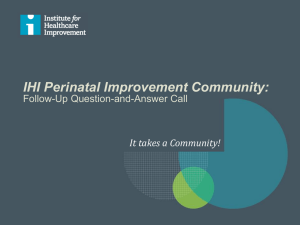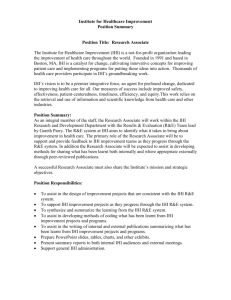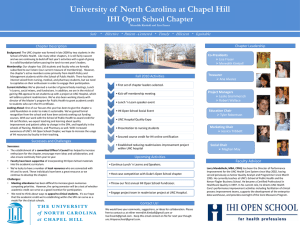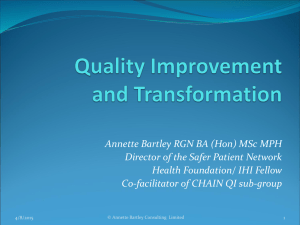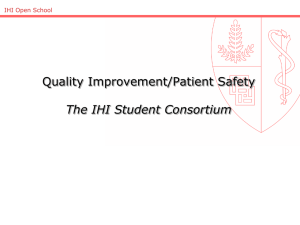SSI1_Learning_Models..
advertisement
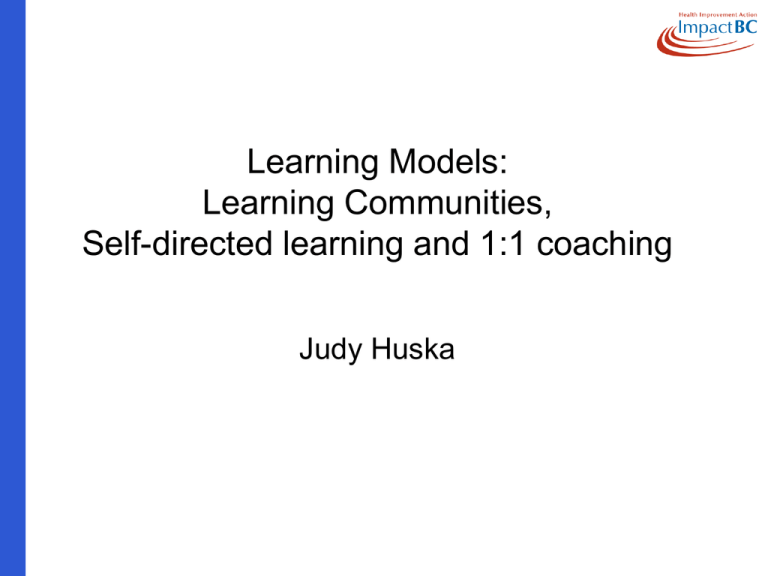
Learning Models: Learning Communities, Self-directed learning and 1:1 coaching Judy Huska What do we hope to accomplish? • Describe a learning community • Consider resources to support self-directed learning • Describe basics of 1:1 coaching 2 Learning communities • Ongoing contact, may or may not be time limited • May not have well-developed content (innovation community) • Virtual or in-person or a combination • Sharing paramount 3 Examples? 4 Self-directed learning ideas 5 Self-directed learning • Books • Journals • Conferences • Internet • Podcasts • Social networks 6 Favorite web learning • www.ImpactBC.ca • IHI open school (US) www.ihi.org/IHI/Programs/IHIOpenSchool/ courses, video • HRSA knowledge gateway (US) www.healthdisparities.net/hdc/html/home.aspx • Saskatchewan Health Council www.hqc.sk.ca • Quality Improvement & Innovation Partnership (ON) www.qiip.ca 7 More web learning… • Health Improvement Skills Center (US) www.improvementskills.org/ • California Healthcare Foundation (articles, video) www.chcf.org • Innovations Exchange (US) www.innovations.ahrq.gov/index.aspx • DOQ-IT University (US) www.masspro.org/DOQITU/ • NHS Institute for Innovation and Improvement www.institute.nhs.uk/ 8 “Coaching is to find a person, where he or she is, and carefully lead him or her forward.” Kirkegaard 9 A Good Practice Coach is…. • C “Conviction Driven” - doing the right things for the right reasons. “Beliefs and convictions provide the boundaries and direction that people want and need to perform well.” • O “Overlearning” – “The essence of coaching is the attention to details and the monitoring of results – these are what help leaders realize vision and accomplish goals.” • A “Audible Ready” – being adaptable and well prepared with flexible approaches are ready to go when change occurs. • C “Consistency” – treatment of teams is predictable based on performance. Praise with high performance and redirection when needed. • H “Honesty-Based” – honest, clear, and straightforward interactions with others Everyone’s a Coach by Ken Blanchard and Don Shula 10 Engaging people • Find out what is important to them • Support them in achieving their goals • Share what you care about Axelrod, 2008 11 Just a few questions you could ask… ・ What would/does the patient want? ・ What have you heard from patients about this? ・ How would we know what else patients/families might want? ・ Help me understand what got in the way with this? ・ What might be another way to do this? ・ What do you think about this idea? Source: Marie Schall & Barbara Balik, IHI 12 And a few more • What do you think is important? ・ How would you solve this? ・ How do people learn how to do what you do? ・ What questions do you hear new people asking? ・ Why can’t we achieve that outcome? ・ What if we took the standard as the starting point? Source: Marie Schall & Barbara Balik, IHI 13 And a few more… • What is your prediction about your potential solution? ・ What other factors should we be considering? ・ What progress have we made so far? ・ Where are we stuck? ・ Where have we failed? What did we learn from it? Source: Marie Schall & Barbara Balik, IHI 14 And the last few… • How can we apply what we’ve learned? ・ Whose support or assistance do we need? ・ How do others know how to do that? ・ What success have we had? ・ Who should we tell about our learning? ・ What teammate should we recognize? Source: Marie Schall & Barbara Balik, IHI 15
